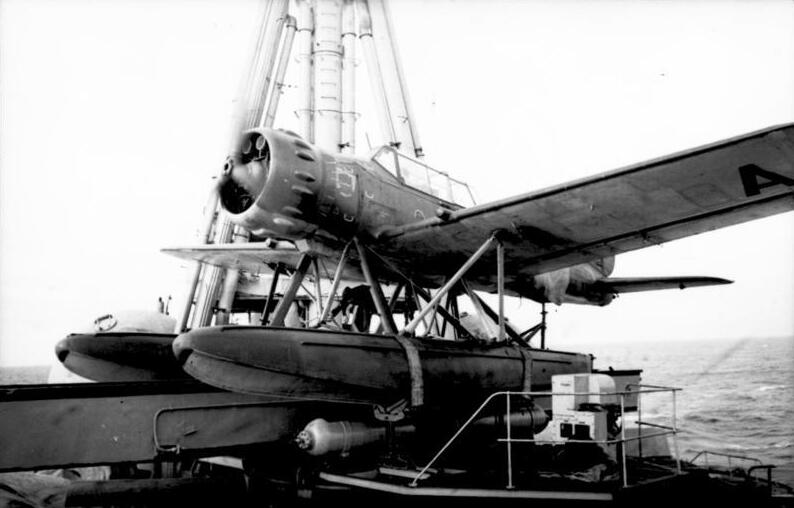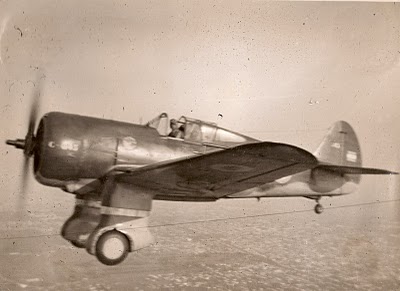|
List Of Aircraft Of Norway In World War II
This is a list of Norwegian World War II aircraft. This list will show all the aircraft in use by the Norwegian Army Air Service(normal aircraft) and Royal Norwegian Navy Air Service(naval aircraft) during the Norwegian campaign or the World War II invasion of Norway by Nazi Germany. If anyone wishes to apply aircraft used by Little Norway please put them under a different header to differentiate them. Fighters * Armstrong Whitworth Scimitar(non-operational) * Gloster Gladiator * Curtiss P-36 Hawk(non-operational) Bombers * Fokker C.V Torpedo bombers * Douglas DT * Heinkel He 115 Reconnaissance * Caproni Ca.310 Naval reconnaissance * Marinens Flyvebaatfabrikk M.F.11 * Breda Ba.28(variant of Ba.25) * Arado Ar 196(1 captured in invasion) Trainers * De Havilland DH.60 Moth * De Havilland Tiger Moth Naval trainers * Marinens Flyvebaatfabrikk M.F.10 References {{DEFAULTSORT:Aircraft of Norway in World War II Norwegian Army Air Service Norway ... [...More Info...] [...Related Items...] OR: [Wikipedia] [Google] [Baidu] |
Norwegian Army Air Service
The Norwegian Army Air Service (NoAAS) ( no, Hærens flyvåpen) was established in 1914.Official Norwegian Defence Force websiteHistory of the Royal Norwegian Air Force Its main base and aircraft factory was at Kjeller. On 10 November 1944, the NoAAS merged with the Royal Norwegian Navy Air Service to form the Royal Norwegian Air Force. Footnotes See also * FF9 Kaje *Fokker C.V The Fokker C.V was a Dutch light reconnaissance and bomber biplane aircraft manufactured by Fokker. It was designed by Anthony Fokker and the series manufacture began in 1924 at Fokker in Amsterdam. Development The C.V was constructed in the earl ... Military units and formations established in 1914 Military units and formations disestablished in 1944 1914 establishments in Norway {{norway-stub ... [...More Info...] [...Related Items...] OR: [Wikipedia] [Google] [Baidu] |
Douglas DT
The Douglas DT bomber was the Douglas Aircraft Company's first military contract, forging a link between the company and the United States Navy. Navy Contract No. 53305 of April 1, 1921, required only 18 pages to set out the specifications that resulted in the purchase of three DT (D for Douglas, T for torpedo) folding-wing aircraft. The DT used a welded steel fuselage with aluminum covering the forward and center sections and fabric covering the rear section. Douglas built 46 DT-1 and DT-2 torpedo bombers for the U.S. Navy, Norwegian Navy, and Peruvian Navy. 20 DT-2 aircraft were built under license by the L-W-F Engineering Company Inc., six by the Naval Aircraft Factory (NAF), and 11 by the Dayton-Wright Company. Another seven were built for Norway under license by Marinens Flyvebåtfabrik. Although still in service when the Germans invaded Norway, the Norwegian DTs did not see action in the Norwegian Campaign. The DT could be fitted either with pontoons or wheeled landing ... [...More Info...] [...Related Items...] OR: [Wikipedia] [Google] [Baidu] |
Arado Ar 196
The Arado Ar 196 was a shipboard reconnaissance low-wing monoplane aircraft built by the German firm of Arado starting in 1936. The next year it was selected as the winner of a design contest and became the standard aircraft of the ''Kriegsmarine'' (German Navy) throughout World War II. Design and development In 1933, the ''Kriegsmarine'' looked for a standardized shipboard observation floatplane. After a brief selection period, the ''Reichsluftfahrtministerium'' (German Air Ministry, RLM) decided on the Heinkel He 60 biplane. This was one of a line of developments of a basic biplane airframe that appeared as a number of floatplanes, trainers, and fighters. Deliveries started in a matter of months. By 1935, it was found that the He 60's performance was lacking and the RLM asked Heinkel to design its replacement. The result was the He 114. The first prototype was powered by the Daimler-Benz DB 600 inline engine, but it was clear that supplies of this engine would be limited ... [...More Info...] [...Related Items...] OR: [Wikipedia] [Google] [Baidu] |
Breda Ba
Breda () is a city and municipality in the southern part of the Netherlands, located in the province of North Brabant. The name derived from ''brede Aa'' ('wide Aa' or 'broad Aa') and refers to the confluence of the rivers Mark and Aa. Breda has 185,072 inhabitants on 13 September 2022 and is part of the Brabantse Stedenrij; it is the ninth largest city/municipality in the country, and the third largest in North Brabant after Eindhoven and Tilburg. It is equidistant between Rotterdam and Antwerp. As a fortified city, it was of strategic military and political significance. Although a direct Fiefdom of the Holy Roman Emperor, the city obtained a municipal charter; the acquisition of Breda, through marriage, by the House of Nassau ensured that Breda would be at the centre of political and social life in the Low Countries. Breda had a population of in ; the metropolitan area had a population of . History In the 11th century, Breda was a direct fief of the Holy Roman Emperor, it ... [...More Info...] [...Related Items...] OR: [Wikipedia] [Google] [Baidu] |
Caproni Ca
Caproni, also known as ''Società de Agostini e Caproni'' and ''Società Caproni e Comitti'', was an Italian aircraft manufacturer. Its main base of operations was at Taliedo, near Linate Airport, on the outskirts of Milan. Founded by Giovanni Battista "Gianni" Caproni during 1908, the company produced several successful heavy bombers during the First World War. Following the acquisition of several other aviation firms throughout the interwar period, Caproni transformed into a sizable aviation-orientated syndicate, the ''Società Italiana Caproni, Milano''. The majority of its aircraft were bombers and transport aircraft. It played a pioneering role in the development of the Caproni Campini N.1, an experimental aircraft powered by a thermo-jet. It provided large numbers of combat aircraft for the Axis during the Second World War. The firm did not prosper in the postwar era, the Società Italiana Caproni collapsing during 1950. Many of the company's former assets were subseque ... [...More Info...] [...Related Items...] OR: [Wikipedia] [Google] [Baidu] |
Heinkel He 115
The Heinkel He 115 was a three-seat World War II ''Luftwaffe'' seaplane. It was used as a torpedo bomber and performed general seaplane duties, such as reconnaissance and minelaying. The aircraft was powered by two 960 PS (947 hp, 720 kW) BMW 132K nine-cylinder air-cooled radial engines. Some later models could seat four, had different engines or used different weapon arrangements. Development and design In 1935, the German Reich Air Ministry (''RLM, Reichsluftfahrtministerium'') produced a requirement for a twin engined general purpose floatplane, suitable for patrol and for anti-shipping strikes with bombs and torpedoes. Proposals were received from Heinkel Flugzeugwerke and from the Blohm & Voss aircraft subsidiary Hamburger Flugzeugbau. On 1 November 1935, orders were placed with Heinkel and Hamburger Flugzeugbau for three prototypes each of their prospective designs, the He 115 and the Ha 140.''Air International'' February 1987, p.97.Donald 1994, p.108. The f ... [...More Info...] [...Related Items...] OR: [Wikipedia] [Google] [Baidu] |
Fokker C
Fokker was a Dutch aircraft manufacturer named after its founder, Anthony Fokker. The company operated under several different names. It was founded in 1912 in Berlin, Germany, and became famous for its fighter aircraft in World War I. In 1919 the company moved its operations to the Netherlands. During its most successful period in the 1920s and 1930s, it dominated the civil aviation market. Fokker went into bankruptcy in 1996, and its operations were sold to competitors. History Fokker in Germany At age 20, while studying in Germany, Anthony Fokker built his initial aircraft, the ''Spin'' (Spider)—the first Dutch-built plane to fly in his home country. Taking advantage of better opportunities in Germany, he moved to Berlin, where in 1912, he founded his first company, Fokker Aeroplanbau, later moving to the Görries suburb just southwest of Schwerin (at ), where the current company was founded, as Fokker Aviatik GmbH, on 12 February 1912. World War I Fokker capitalized o ... [...More Info...] [...Related Items...] OR: [Wikipedia] [Google] [Baidu] |
Royal Norwegian Navy Air Service
The Royal Norwegian Navy Air Service ( no, Marinens flyvevesen) was alongside the Norwegian Army Air Service the forerunner to the modern-day Royal Norwegian Air Force. History The RNNAS was established on 1 June 1912,Official Norwegian Defence Force websiteThe first military flight in Norway with the maiden flight of the HNoMS Start, piloted by Hans Dons. The founding of the Air Service was based largely on pride. On 19 April 1912 newspapers had reported that a Swedish pilot was planning to fly over Moss and Horten. Horten was the site of the main base of the Royal Norwegian Navy. Three officers of the Norwegian submarine ''Kobben'' decided that it would be a shame if they were not able to beat him to it. Later that year, the Maurice Farman biplanes ''Njaal'' and ''Gange Rolf'' were purchased. In 1915 the Navy established its own aircraft factory and a flying school. The main flight base was established in Horten. Other naval air stations were established in Kristiansand ... [...More Info...] [...Related Items...] OR: [Wikipedia] [Google] [Baidu] |
Curtiss P-36 Hawk
The Curtiss P-36 Hawk, also known as the Curtiss Hawk Model 75, is an American-designed and built fighter aircraft of the 1930s and 40s. A contemporary of the Hawker Hurricane and Messerschmitt Bf 109, it was one of the first of a new generation of combat aircraft—a sleek monoplane design with a retractable undercarriage making extensive use of metal in its construction. Perhaps best known as the predecessor of the Curtiss P-40 Warhawk, the P-36 saw little combat with the United States Army Air Forces during World War II. It was the fighter used most extensively and successfully by the French Air Force during the Battle of France. The P-36 was also ordered by the governments of the Netherlands and Norway but did not arrive in time to see action before both were occupied by Nazi Germany. The type was also manufactured under license in China, for the Republic of China Air Force, as well as in British India, for the Royal Air Force (RAF) and Royal Indian Air Force (RIAF). Axis pow ... [...More Info...] [...Related Items...] OR: [Wikipedia] [Google] [Baidu] |
Gloster Gladiator
The Gloster Gladiator is a British biplane fighter. It was used by the Royal Air Force (RAF) and the Fleet Air Arm (FAA) (as the Sea Gladiator variant) and was exported to a number of other air forces during the late 1930s. Developed privately as the Gloster SS.37, it was the RAF's last biplane fighter aircraft, and was rendered obsolete by newer monoplane designs even as it was being introduced. Though often pitted against more formidable foes during the early days of the Second World War, it acquitted itself reasonably well in combat. The Gladiator saw action in almost all theatres during the Second World War, with a large number of air forces, some of them on the Axis side. The RAF used it in France, Norway, Greece, the defence of Malta, the Middle East, and the brief Anglo-Iraqi War (during which the Royal Iraqi Air Force was similarly equipped). Other countries deploying the Gladiator included China against Japan, beginning in 1938; Finland (along with Swedish voluntee ... [...More Info...] [...Related Items...] OR: [Wikipedia] [Google] [Baidu] |







